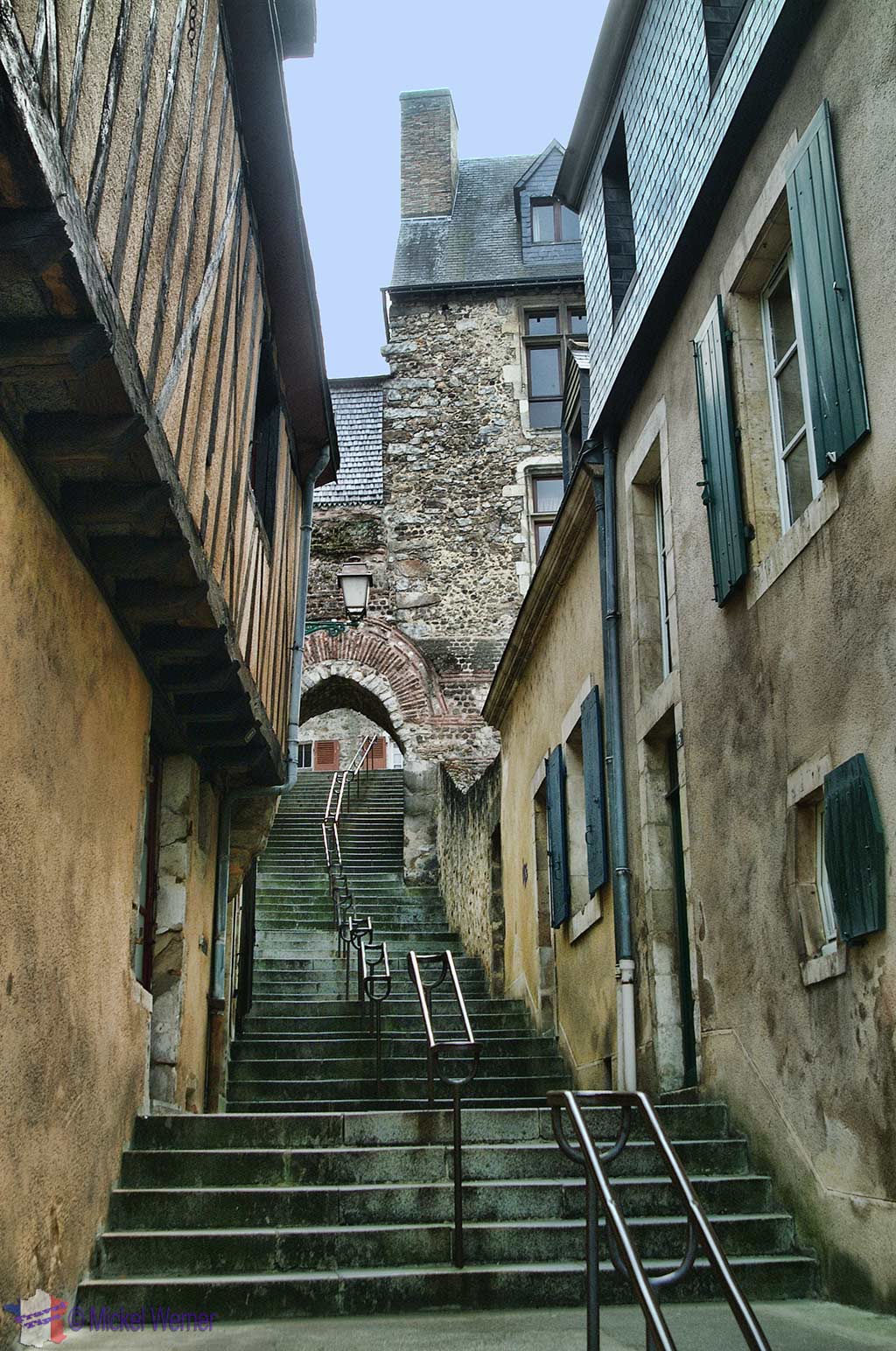The name Le Mans is famous amongst motorheads, petrolheads and adrenaline junkies the world over: home of the famous 24 Hours of Le Mans cars (and motorcycles) race. But Le Mans is much more than a mythical car race. It’s a very old city with its history dating back to 50 BC when the Romans took over the small settlement alongside the Sarthe river. Over the centuries Le Mans has grown and prospered into a vibrant and rich city, now rich with some 150,000 inhabitants (20th biggest city in France).
The old part of Le Mans, called “Le Vieux Mans“, is in the city centre alongside the Sarthe river. The fortified walls around the medieval part of the city date back to the 3rd century, and the inner city is very well preserved from WWII bombings. Walking the small cobblestone streets in the old part of the city will show you what it was like centuries ago.
The old city is the most interesting part of the city to visit. The first, and probably foremost, building to see is City Hall. That is because it is located inside the fortified walls.
The former “Palais des Comtes du Maine” was the palace used amongst others by King Henri II (of England). The large palace was built between 970 and 1015, and over the centuries it was updated. Nowadays it is Le Mans’ City Hall and can be visited for free.
Parts of the building used existing Roman infrastructures and monuments as its base. The streets are narrow, mostly cobblestones and at times a bit steep.
Fortified Wall
The wall around the inner city, a fortified wall, contains 26 towers and 11 doors. The wall was built during the Roman period, towards the end of the 3rd century and has been very well preserved.
The base of the wall is 4 meters wide and is 1300 meters long. Next to Rome, Italy, the Le Mans wall is the best preserved Roman wall in Europe.
Inside the old Le Mans, you will find many signs of the Romans, including baths and theatres, all in good condition.
Saint-Julien Cathedral
In the inner city is the incredible Saint-Julien cathedral, one of the biggest in France. The Roman-Gothic style place of worship was built in the 6th century and finished several centuries ago, although a cathedral like this is never considered finished.
The cathedral has seen many changes over the years, and is in perpetual state of repair due to its advanced age.
In front of the cathedral are all houses dating back to the beginning of the previous millennium. Built close up to the church itself, so not leaving a big square as can be seen at many other cathedrals.
On one side is the actual Bishop’s palace,the “Palais du Grabatoire” built in 1520.
On the main parking of the cathedral, just on the outside of the fortified walls you will find an beautiful fountain:
Flanked by two stairways, this is the way to the church when arriving from the parking area (place des Jacobins).
The fountain at the Place du Jet d’eau was built in 1853.
Old Le Mans (Vieux Le Mans)
Old Le Mans, the inner city is also known as Cité Plantagenêt, is flanked by the Roman walls. Streets are lined by cobblestones, some of the streets are even marked as “historical monuments”.
TIP: Wheelchairs can access the biggest portions of the old city, but some of them will pose problems (like in the photo above).
Streets are not level, and at times form a challenge. But they are very interesting to see since they have not been altered over the centuries. The houses in the old city are all as they were, though most have been updated to today’s rules & regulations.
Houses are made out of brick but also mud and straw, using wood to strengthen them.
Often you will see small towers built into the sides of the houses. Many of them have been destroyed over time, but there are enough of them left to give you an impression how the wealthy city dwellers lived.
Alongside the wall you will not only be able to walk the way the guards walked, but also see some of the houses that were built against, even on top of the wall.
Here are some final street/house scenes of the Old Le Mans:
Summary
A visit to the old part of Le Mans is a must. It’s well preserved and worth the visit, but do watch out for uneven roads and a few steps to climb.
TIP: Do NOT visit when either the 24 Hours car race or the 24 Hours motorcycle race is on. There will some 100,000 to 200,000 visitors in the city, many of them drunk and rowdy. Most hotels and restaurants will be full.
Related Posts
- 10000
- 10000
 Transport Getting There Air: There is no airport with flights from within France or Europe. Getting Around Le Mans Le Mans has a pretty good public transportation system with buses and trams. Visiting the old city is done on foot, but anything outside, particularly the circuit, you will need transportation.…
Transport Getting There Air: There is no airport with flights from within France or Europe. Getting Around Le Mans Le Mans has a pretty good public transportation system with buses and trams. Visiting the old city is done on foot, but anything outside, particularly the circuit, you will need transportation.…



















